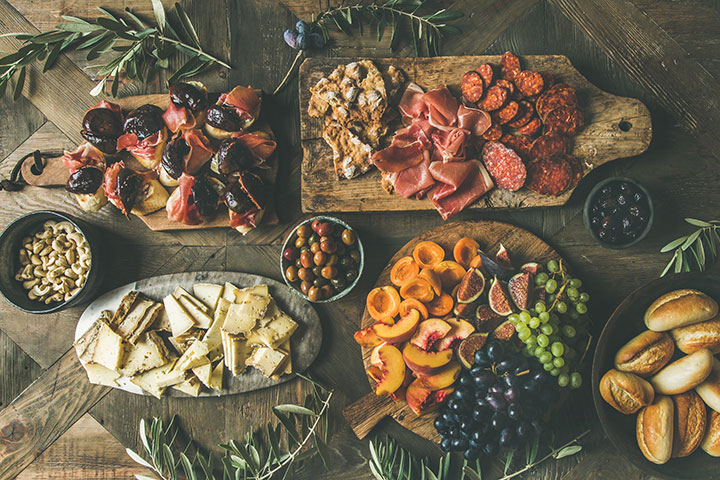Roasted turkey with savory stuffing. Standing rib roast with Yorkshire pudding. Sides of buttery mashed potatoes, sugary cranberry sauce, and for dessert, a pumpkin pie topped with whipped cream. These are all the makings of a holiday culinary feast.
A caregiver or a senior planning for the holidays should enjoy the season’s fun festivities. That includes family get-togethers, socializing at holiday parties, and dining with friends. Celebrations are an important part of the season, of course, but seniors with health issues to consider, such as diabetes, high cholesterol or blood pressure, or serious weight concerns need to keep meal splurging in check. Which, admittedly, is challenging when those holiday treats are all out in front!
Consider that some experts calculate that the traditional Thanksgiving dinner plus the usual before-mealtimes snacks can add up to 4,500 calories and top a whopping 229 grams of fat. That is certainly a gastronomic overstuffing for anyone, but especially a senior.
Making a Memorable Meal
A combination of careful meal planning, shopping, and cooking tailored to the senior’s critical dietary needs can still make the seasonal festivities memorable.
Strategic grocery shopping for seniors: Follow any dietary restrictions, and plan the festive menu to include plenty of fresh vegetables, fruits, and lean meats. Dairy items, from yogurts to creams, should be low-fat. Smart shoppers check the nutrition labels on prepared foods, and pick those with the lowest fat, carbohydrate, and calorie counts. (You can get some good shopping tips on Good Housekeeping.)
Omit from the menu dishes that are notoriously rich in calories, such as buttery mashed potatoes and heavy gravies. And despite eye and appetite appeal, skip past the snacks and dessert sections in your market. Instead of a cheese platter for hors d’oeuvres and a caloric pie for dessert, buy instead seafood, such as lump crabmeat or sliced vegetables to start, and fresh fruit to end. To assure that your meal preparation and festive dishes are tempting to look at and to eat, take time to search for health-focused dishes that are at the same time celebratory.
Go light: Cooking light could have at least two interpretations:
(1) One urges people to skip heavy meals from morning to the celebratory meal itself. But staying light does not mean skipping a meal and feeling famished. Plan and serve a healthy breakfast of protein such as eggs plus a side of fresh fruit. Those who do eat breakfast will likely not overeat at dinner time. To take the edge off, prepare a snack of vegetables, sliced fruit, a light salad or possibly some yogurt.
(2) The second meaning skips butter or margarine when cooking, rather opting for extra virgin olive oil. Prepare meals with healthier side dishes that highlight fiber-rich vegetables, whole grains and fruits, or substitute nonfat or skim milk in the mashed potatoes, egg nog or pumpkin pies. And cut back on the amount of salt added while cooking — too much salt can spike blood pressure.
At the table: For seniors, good hydration is key for good health. Hosts and family members need to be sure that ample fluids — water, club soda, or tonic water — are readily available before, during, and after the meal. A good health tip: limit the amount of alcoholic drinks and sugary beverages.
When setting the table, caretakers or family members should use moderate-sized dinnerware. And when serving the meal, make sure to add plenty of vegetables and fruits to the senior’s plate. It’s wise for the senior to limit the meal to just one serving, and to eat just until satisfied.
Remember those rich and yummy desserts — chocolates, cookies, cakes, pies — which often conclude a holiday feast? Indulging in this influx of sugary foods seems to be part of the festive eating, but the senior should nibble on a small sampling, chew longer, and eat slowly to enjoy each and every bite.
Afterwards: Chances are that the senior despite careful eating may have consumed too much fat or calorie-rich food. To help keep fit, the senior should plan to exercise, exercise, and exercise. And return to a sensible low-fat, low-calorie diet loaded with fresh vegetables, fruit slices, lean cuts of meat, and fiber.
(This article has been reviewed September, 2024 since it originally published November, 2017.)
